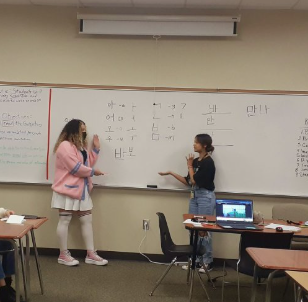As technology continues to evolve, many high schools are stepping up to offer students opportunities to explore fields that were once only accessible at the university level. One of the most exciting additions to modern high school curriculums is the introduction of Artificial Intelligence (AI) and Machine Learning (ML). These rapidly growing fields are changing industries worldwide—from transportation and healthcare to communication and environmental science. By integrating AI and ML into high school programs, educators are helping students gain early exposure to the tools and concepts that are shaping the future.
AI and ML courses in high schools typically begin with foundational concepts. Students learn about data patterns, algorithms, neural networks, and how machines can be trained to make decisions. Rather than focusing solely on theory, many programs emphasize real-world applications through hands-on projects. Students might work with datasets to recognize patterns, design basic chatbots, or simulate decision-making models used in everyday technologies such as voice assistants and navigation systems.
What makes these courses especially engaging is their interdisciplinary nature. AI and ML aren’t confined to computer science; they intersect with math, engineering, biology, language processing, and even social studies. For example, a student interested in environmental science might use machine learning to predict weather patterns or analyze climate change data. In language classes, AI-powered translation tools can serve as learning aids and discussion starters about the cultural impact of technology. This wide applicability allows students with different interests to find a meaningful connection with AI.
High schools are also finding creative ways to support these programs outside of traditional classroom settings. Robotics clubs, coding competitions, and STEM fairs now often include AI-focused challenges that encourage collaborative learning. In some schools, students build and program autonomous vehicles, develop image recognition software for science projects, or create educational apps using simple machine learning tools. These experiences build technical confidence and teach the importance of teamwork, creativity, and communication.
To further enhance learning, schools frequently partner with local colleges, universities, and tech companies. These collaborations offer access to guest lectures, mentorship programs, and summer enrichment camps that focus on AI topics. Students gain a clearer view of career pathways and receive encouragement to pursue post-secondary education in technology-related fields. Exposure to college-level research and industry professionals at a young age can be incredibly motivating and informative.
Another important aspect of introducing AI and ML at the high school level is teaching students to think critically about the ethical implications of these technologies. Discussions might include topics such as algorithmic fairness, bias in data, and the role of human judgment in automated systems. Educators help students understand that with the power of AI comes the responsibility to design systems that are inclusive, transparent, and respectful of privacy. These lessons foster not just technical competence, but also a sense of digital citizenship.
It’s worth noting that students don’t need to be tech experts to begin learning about AI. Many programs are designed to be beginner-friendly, requiring only curiosity and a willingness to explore. With the support of educators, peer networks, and accessible online tools, students can start building their understanding one step at a time. Whether they’re experimenting with block-based programming or analyzing trends in a spreadsheet, every activity contributes to a deeper knowledge of how intelligent systems work.
In the coming years, AI and machine learning will likely become a standard part of secondary education, much like computer literacy or algebra. Schools that invest in these programs today are giving their students a valuable head start. By making AI education approachable and inclusive, high school programs are not only preparing future engineers and scientists—they’re empowering all students to participate in a technology-driven world with awareness, confidence, and purpose.














